Transit systems have seen massive expansions in the past decade, yet ridership is down across the nation. LA Metro’s system is a great example of the problems plaguing many transit agenices. Despite billions in new light rail investment and adding about 40 rail miles to the system between 2002 and 2018, ridership is still below its 1985 peak.
The Los Angeles County Metropolitan Transportation Authority, the region’s largest carrier, lost more than 10% of its boardings from 2006 to 2015, a decline that appears to be accelerating. Despite a $9-billion investment in new light rail and subway lines, Metro now has fewer boardings than it did three decades ago, when buses were the county’s only transit option. – Los Angles Times
Transit ridership seemed to have plateaued before Uber and Lyft really took off, but now, ride sharing services are creating another disincentive towards transit ridership. Recent research shows that a substantial number of ride sharing trips are replacing transit trips. There’s a lot to be said for the convenience of shared mobility services, and this is why their customer base is growing, but many transit agencies became complacent and took their dissatisfied customer base for granted over the past few decades. Long headways on key routes, byzantine bus routes, and poor customer service have partly fueled ride sharing as a quick, efficient alternative to many transit systems.
But there’s hope. Since bus networks are responsible for the vast majority of transit ridership, making changes to these networks can have benefits which reach almost every rider. Changing a bus route is one of the cheapest and fastest things a public agency can do as well. Once there’s political and community support for a redesign, it can be implemented almost overnight. Cities across the countries have been redesigning their bus networks with great results. Most of these network redesigns involve creating more direct, efficient routes which reflect changing land use patterns and employment centers. Cutting low performing, long headway routes and supporting popular routes with more frequent service also goes a long way in making the system more usable.
Houston’s bus network redesign fundamentally changed the system from a hub and spoke network focused on downtown to a grid-style system that reflects current origin-destination trips and the densification of neighborhoods outside the CBD. After the change, total transit ridership was up 6.8 percent within a year. That’s not the entire story, though.
Local buses saw a 13 percent increase in ridership on Saturdays and a 34 percent increase on Sundays, according to METRO, with similarly strong numbers for rail as well,” writes Binkovitz. That could mean students and shift workers commuting to weekend jobs are getting more use out of the system, which was one of Metro’s goals. – Citylab
Weekend service is critical in meeting the transportation needs of lower-income service workers, students and choice riders. It’s a bellwether indicating the overall health of a transit system, and solid evidence that Houston’s redesign is working so far. The frequent network (bus routes with headways of less than 15 minutes) has also been expanded beyond the CBD, with more direct routes between growing, urban neighborhoods.
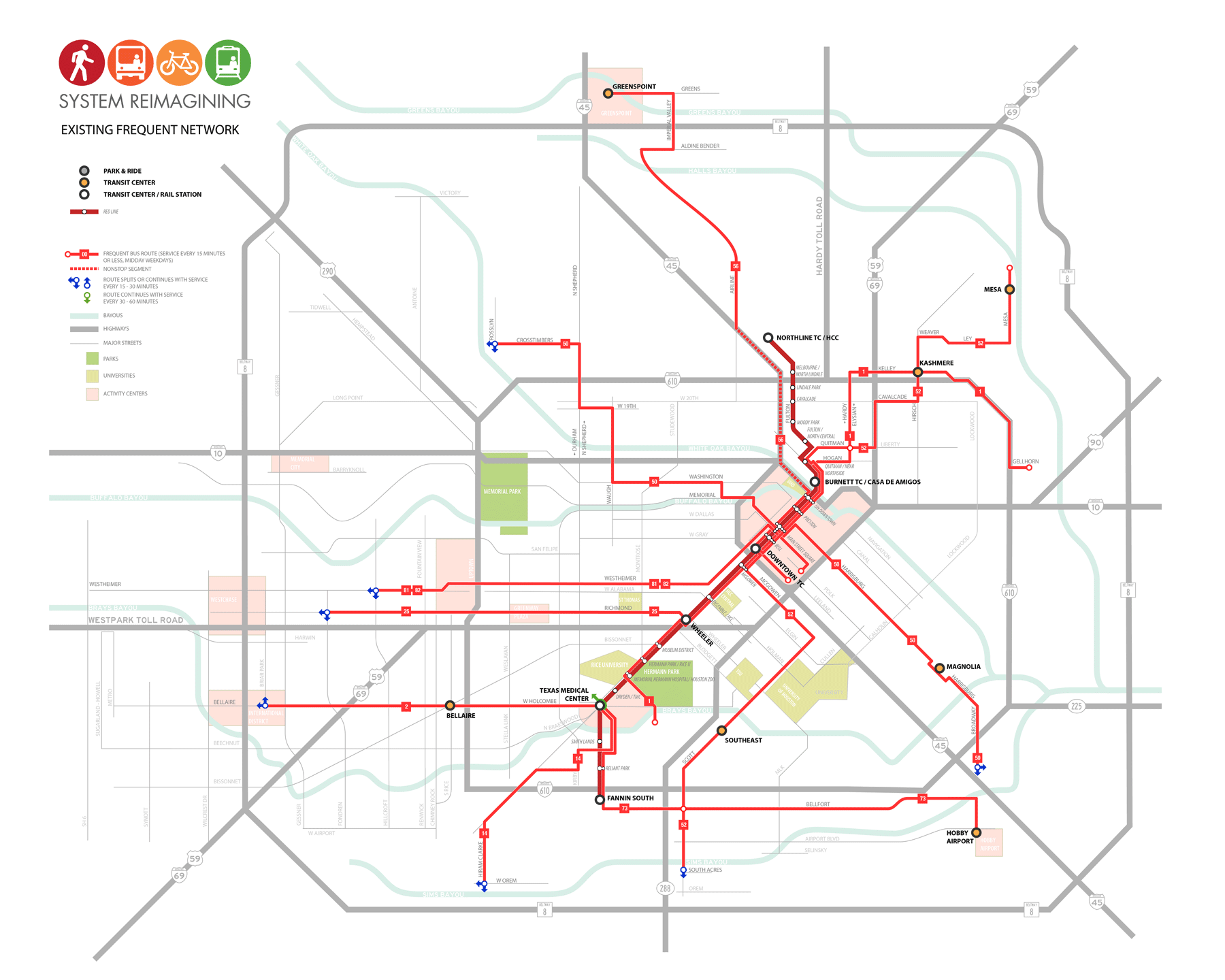
Miami is also in the process of reimagining their bus network with a focus on higher frequency service and more efficient transfers between routes. Miami Transit Alliance and Jarrett Walker put together a great report showcasing current trends, priorities and challenges of increasing ridership. Since Miami’s network is already a grid with broad geographical coverage, a complete redesign may not be necessary. Transfers need to be faster, though, since the report noted significant cross town trips which utilized multiple bus routes. Increasing bus frequency on priority routes, resulting in faster transfer times, can go a long way in reversing Miami’s declining transit use.
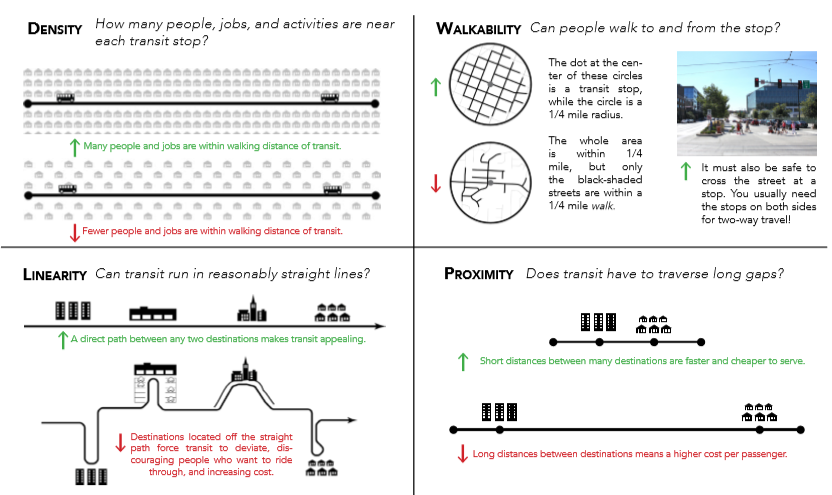
Preliminary concepts for Miami’s redesigned bus network can be seen here. One alternative includes several new high frequency (15 minute or less headways) routes between Downtown Miami, Miami Beach and burgeoning neighborhoods like Wynwood and Midtown.
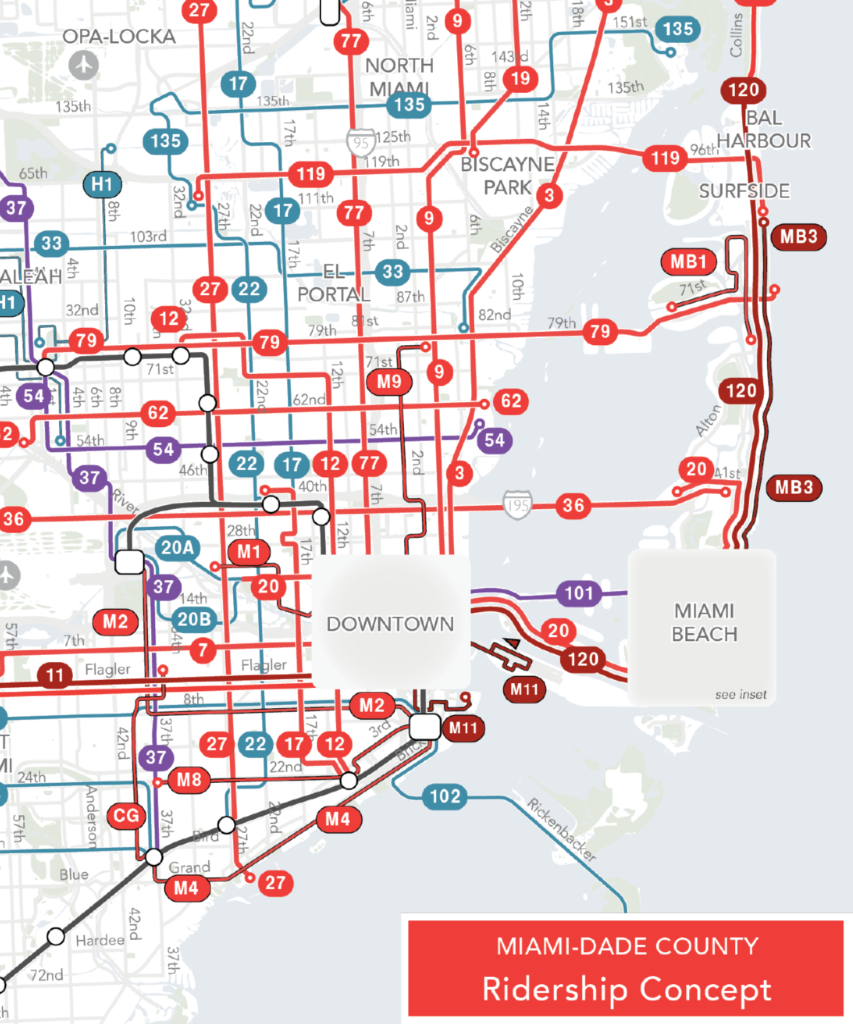
Meanwhile, Philadelphia, Indianapolis, Dublin and NYC are also in the process of rethinking their bus networks using the same guiding principles as Houston and Miami while basing changes on the unique urban geography of their cities. Dublin’s project is interesting in that it proposes to keep the hub and spoke system intact while adding high frequency ring crosstown routes connecting the suburbs. Once route changes take effect and show ridership benefits, the next step is creating dedicated bus lanes and BRT style boarding platforms, something many agencies are already doing.
A common theme between many route redesigns is the correlation between changing land uses, urban design and ridership. Convoluted lines on a map going to and from the CBD may have worked in the past when most people worked downtown, but job sprawl, a growing downtown residential base and new, mixed-use suburban neighborhoods in many cities demands a bus network that reflects the evolution of our cities. Bus frequencies and reliability are also more important now than they’ve ever been since private services now compete for riders. The introduction of ride sharing and future transportation options like autonomous vehicles can still support time tested, legacy transit systems if transit adapts to changing ridership demands and urban forms.

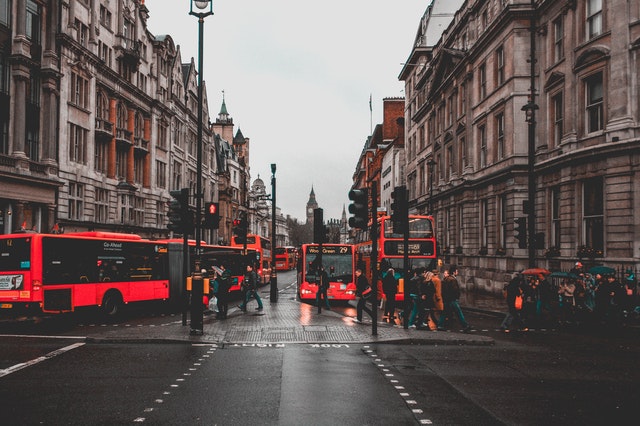

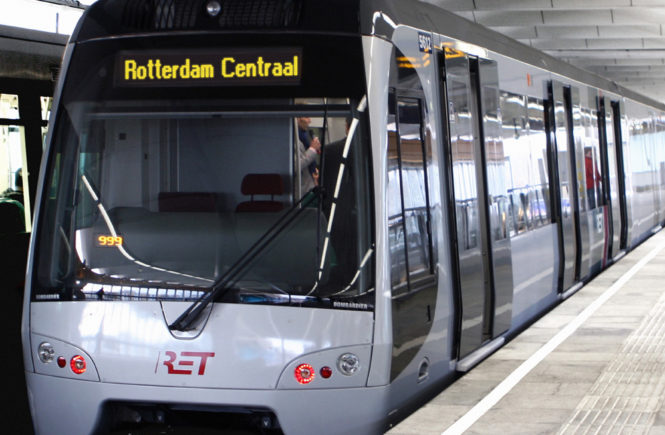
1 Comment
Good points. I think BRT is really underrated in urban areas and can be used as feeder routes for light rail and heavy rail networks. I believe Indianapolis recently built a new BRT line. It will be interesting to see how it does in the future.